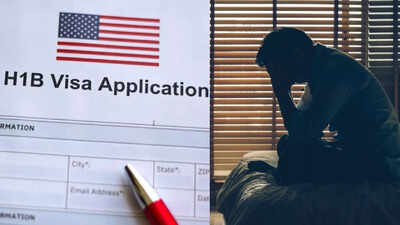Read US immigration authority notice that has created panic as H-1B children may lose Green Card under new rules

Recently, USICS has updated the policy on CSPA (Child Status Protection Act) age calculation triggering widespread concern among the Indian families on H-1B and other employment-based visas, as it could prevent their children from obtaining a green card. The new which will come into effect starting August 15, redefines how a child’s age is calculated under the Child Status Protection Act (CSPA) and the new calculation method could result in thousands of children “aging out” of green card eligibility once they turn 21 — even if their parents’ petitions are still pending.
USCIS updates policy on CSPA age calculation: Here’s what has changed
Effective from August 15, 2025, USIC will now use the Final Action Dates chart from the Department of State’s Visa Bulletin to determine when a visa is considered “available” for CSPA age calculation. Earlier, under a more lenient February 2023 policy, USCIS used the Dates for Filing chart, which allowed more children to lock in their age and remain eligible for permanent residency.“We are updating the Policy Manual to clarify that a visa becomes available for the purposes of Child Status Protection Act age calculation based on the Final Action Dates chart of the Department of State Visa Bulletin. The new guidance applies to requests filed on or after August 15, 2025. We will apply the Feb. 14, 2023, policy of CSPA age calculation to adjustment of status applications pending with USCIS before August 15, 2025, as these aliens may have relied on that policy when they filed,” reads the notice.
Impact on Indian families
Experts suggest that in most of the cases the final action date is way behind the date of actual filling. So, with this new rule coming into effect many children will turn 21 and lose the eligibility before their family’s green card petition is finalised. As reported by the Cato Institute, Indians make up to 62% of employment-based green card backlog and millions of petitions are pending since March 2023. Immigration experts also warn that the new disproportionately affect Indian children who have grown up on the US but will now be forced to leave the country once they turn 21. “Generally, an unmarried alien child must be under age 21 to obtain lawful permanent resident status in the United States based on their parent’s approved petition for a family-sponsored, employment-based, or diversity visa. If they turn 21 and age out during the immigration process, they generally are no longer eligible to immigrate based on their parent’s petition. Congress enacted the CSPA to protect certain alien children from losing their eligibility for lawful permanent resident status based on an approved visa petition. The CSPA provides a method to calculate the alien’s age that considers when an immigrant visa number “becomes available,” adds the notice by USCIS.Sukanya Raman, country head of Davies & Associates, an immigration firm told Economic Times, “More children are at risk. The final action date is often years behind the filing date, and many will lose eligibility before a visa becomes available.”The ET report also revealed that the immigration law firms are witnessing a surge in calls from anxious parents who are seeking clarity and are also looking for options. “Most of the calls have been about what their status is and the way forward,” said Gnanamookan Senthurjothi, founder of Visa Code. “For some families, it’s a matter of staying in the U.S. or returning — even if one child can’t stay legally.”
Alternatives for families
With the new rule taking effect in just a few days, experts are advising families on potential alternatives. Experts advise the families to file for the process before August 15 which will enable them to lock the age under the older policy.Apart from this, they can also apply for student visas (F-1) or employment visas (H-1B) for children who will soon turn 21. The families can also consider EB-5 investment visas, which offer a separate path to residency.






